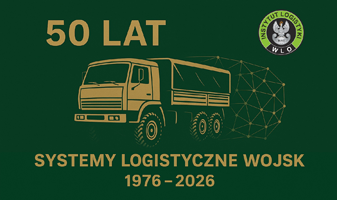ORIGINAL PAPER
Prospects for the development of zero- and low-emission vehicles in urban distribution systems in terms of the situation on the fuel market
1
Warsaw University of Technology, Division of Transportation Systems Engineering and Logistics, Faculty of Transport, Poland
2
Warsaw University of Technology, Division for Construction and Operation of Transport Means, Faculty of Transport, Poland
3
Silesian University of Technology, Department of Transport Systems, Traffic Engineering and Logistics, Faculty of Transport and Aviation Engineering, Poland
A - Research concept and design; B - Collection and/or assembly of data; C - Data analysis and interpretation; D - Writing the article; E - Critical revision of the article; F - Final approval of article
Submission date: 2022-11-02
Final revision date: 2022-12-01
Acceptance date: 2022-12-30
Publication date: 2022-12-31
Corresponding author
Jakub Murawski
Division of Transportation Systems Engineering and Logistics, Politechnika Warszawska, Wydział Transportu Warsaw University of Technology, Faculty of Transport, Koszykowa 75, 00-662, Warszawa, Polska
Division of Transportation Systems Engineering and Logistics, Politechnika Warszawska, Wydział Transportu Warsaw University of Technology, Faculty of Transport, Koszykowa 75, 00-662, Warszawa, Polska
SLW 2022;57(2):41-62
KEYWORDS
TOPICS
ABSTRACT
Nowadays, problems related to sustainable transport and limiting the negative environmental impact of transport are essential elements of the agenda of the European Union and many countries worldwide. At the same time, the increase in the popularity of zero- and low-emission vehicles may be influenced by the global situation in the fossil fuel market, especially rising oil prices. Due to their characteristics, the use of zero or low-emission vehicles is justified, especially in cities, both in individual transport as well as in public transport and freight transport. The article focuses on analyzing prospects for using zero or low-emission vehicles in distribution systems (especially in cities). Therefore, the research goal of the article is to answer the question: what are the expected trends in the level of use of zero-emission and low-emission vehicles in distribution systems? The research hypothesis assumes that the level of use of low- and zero-emission vehicles in distribution systems will increase in the coming years, considering the situation in the global fuel market. Research methods such as desk research (including analyzing data from the fuel market) and a critical literature review were used to verify the hypothesis. The study is based on real data on urban distribution systems' functioning and individual vehicles' technical data. The article examines the possibility of using delivery vehicles with different load capacity, which can be used in transport systems with different specificities. The conducted research shows that taking into account the current trends in the fuel market, in the next 5-10 years, the operating costs of zero- or low-emission vehicles will become lower than the operational costs of conventional vehicles, which will lead to an increase in their use in urban distribution systems. In addition, it is worth noting that the trend mentioned above is consistent with the transport development strategies defined at the level of the European Union and individual countries. The results can be the basis for further research on the profitability and legitimacy of using zero or low-emission vehicles in city logistics systems.
We process personal data collected when visiting the website. The function of obtaining information about users and their behavior is carried out by voluntarily entered information in forms and saving cookies in end devices. Data, including cookies, are used to provide services, improve the user experience and to analyze the traffic in accordance with the Privacy policy. Data are also collected and processed by Google Analytics tool (more).
You can change cookies settings in your browser. Restricted use of cookies in the browser configuration may affect some functionalities of the website.
You can change cookies settings in your browser. Restricted use of cookies in the browser configuration may affect some functionalities of the website.


